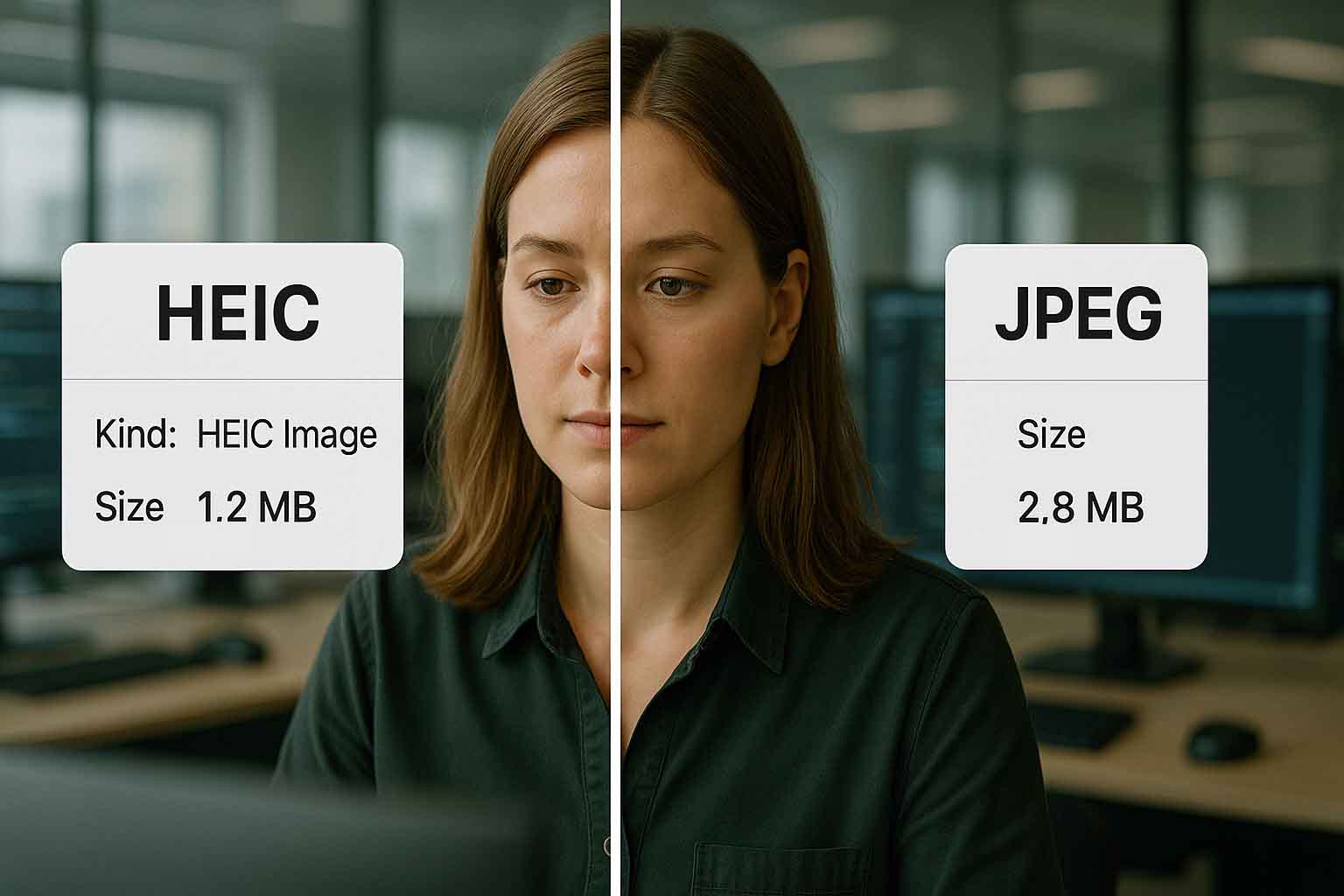
Image quality matters. Whether you’re managing social platforms, running a global e-commerce site, or building a cross-border communication hub, the clarity and size of each photo can affect speed, presentation, and accessibility. With the increasing use of iOS mobile devices, more content is now saved in the HEIC format—High-Efficiency Image Container. It’s compact and sharp but brings along several technical challenges.
For professionals looking to streamline their digital operations, understanding how to handle HEIC files can lead to faster, more stable publishing. If you’re looking for a trusted solution to begin with, consider using this Heic converter for efficient conversion.
What Makes HEIC a Popular Choice?
HEIC is built on the HEIF standard and relies on HEVC compression. Compared to the common JPEG format, it produces much smaller file sizes while preserving sharpness and color accuracy. This feature is valuable when managing bandwidth, especially in areas where data usage costs are high. In addition, HEIC contributes to reduced energy use in data centers.
However, it’s not fully compatible with all systems. Legacy Windows machines, some Android models, and many website content management plugins may fail to render HEIC images correctly without additional tools.
Common Issues Faced by Content Teams
Working with HEIC across international platforms can be tricky. Several barriers often stand in the way of efficient handling.
First, image editing software and online platforms often lack native HEIC support. This slows down the post-processing stage, forcing users to convert images before edits.
Second, web browsers vary in their ability to display HEIC. Many need an alternative image format to ensure all users see the content properly. Fallback formats like JPEG or WebP are often required.
Third, metadata inconsistencies arise during file conversions. Details like time, location, and copyright credits can disappear in the process. This complicates internal tracking and legal documentation.
Finally, global workflows typically involve multiple operating systems. The mixture of Windows, macOS, and mobile environments often results in compatibility issues during uploads, previews, and file sharing.
Key Strengths and Limitations of the Format
The HEIC format does bring several benefits, but also comes with constraints that users must address. Its smaller file size allows quicker loading and better performance. High-resolution images retain quality even after zooming, making them ideal for product displays and creative portfolios.
On the downside, limited compatibility across platforms demands regular file conversions. This adds an extra step to workflows and can introduce delays. Some companies are also cautious due to licensing requirements linked to the HEVC compression technology behind the format.
Managing HEIC Files with Practical Tools
An efficient converter is often the first step in working with HEIC files. Cross-platform tools are best, especially for organizations using mixed systems. Designers dealing with high volumes of content may benefit from desktop batch tools, while developers may prefer server-side scripts to convert files during upload.
Browser-based modules using WebAssembly are also gaining popularity. These allow instant conversion without sending data to an external server. That means quicker load times, more privacy, and less reliance on external infrastructure.
Organizing HEIC in CMS and DAM Systems
For websites handling global traffic, having a reliable system for storing and displaying HEIC is crucial. Dynamic content delivery networks can detect browser compatibility and serve the correct format on demand. This reduces loading errors and saves bandwidth.
File metadata also needs attention. Fields like author credit and usage rights must remain intact during any conversion process. Make sure your system preserves this data, especially when handling licensed or professional photography.
Version control adds another layer of reliability. By tagging each file version, teams can easily revert to earlier images when updates fail or are rejected. A simple filename structure—like image@2x.heic—can go a long way in keeping things clear.
Workflow Improvements for Speed and Stability
Storing both original HEIC files and converted variants reduces the need for on-demand processing. That said, converting files multiple times can still create bottlenecks if not planned well.
To avoid this, generate JPEG and WebP versions during batch uploads. Caching commonly viewed sizes such as thumbnails also helps minimize strain on the server. Use file hashing to prevent repeated processing of unchanged images. This will save both time and computing resources.
Keeping Image Files Secure and Reliable
When moving image files across cloud infrastructure, there’s always the risk of data corruption. Using hash-based checks like SHA-256 ensures that each file remains intact during transfer. If something doesn’t match, the system can request a fresh copy from the original source.
Metadata can reveal sensitive details like exact location, device serial number, and shooting time. While this is useful for internal audits, it can pose risks when images are published. For public galleries, remove or anonymize geotags. For internal use, consider encrypting this data to maintain privacy.
Cyber threats can also come through image files. Some attackers hide malware inside improperly formatted HEIC headers. To prevent this, rely only on libraries with active development and regular updates. It’s also good practice to isolate image processing from core application functions by using container environments.
Supporting Team Collaboration Across Platforms
HEIC is now frequently shared across team dashboards, especially on cloud platforms. These shared spaces benefit from uniform naming conventions. Use ISO timestamps and keyword slugs in file names to improve searchability, especially in multilingual environments.
Not all users have up-to-date systems, so including JPEG previews with every HEIC upload helps avoid confusion. Older operating systems can fall back on the previews without needing manual conversions.
Improving Accessibility and Search Compatibility
Although HEIC itself doesn’t affect a site’s visibility in search engines, proper labeling still matters. Each image should have an alt attribute that describes its content accurately. When fallback images are used, maintain the same alt text for consistency.
List only the canonical image URLs in your sitemap. Avoid including separate entries for fallback versions. This keeps your SEO footprint clean and avoids potential penalties for duplicate content.
Preparing for New Image Formats
HEIC may be modern, but newer formats like AVIF are already in the spotlight. AVIF delivers even smaller file sizes and avoids some of the legal and technical concerns associated with HEVC. However, not all browsers support it yet.
Before switching, track browser adoption rates. Run structured A/B tests to measure real-world benefits like load time and bounce rate. Having a modular encoding pipeline lets you test and adapt quickly without overhauling your system.
Building a Smarter Image Strategy
Better handling of HEIC files starts with practical steps—choosing the right tools, maintaining clear workflows, and protecting image integrity. Whether you’re publishing for a niche market or managing global campaigns, a streamlined HEIC strategy leads to faster websites, cleaner displays, and safer file handling.


No Comments